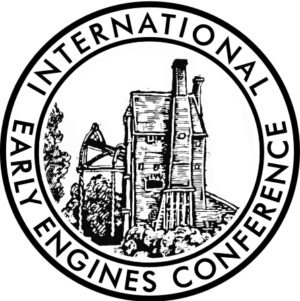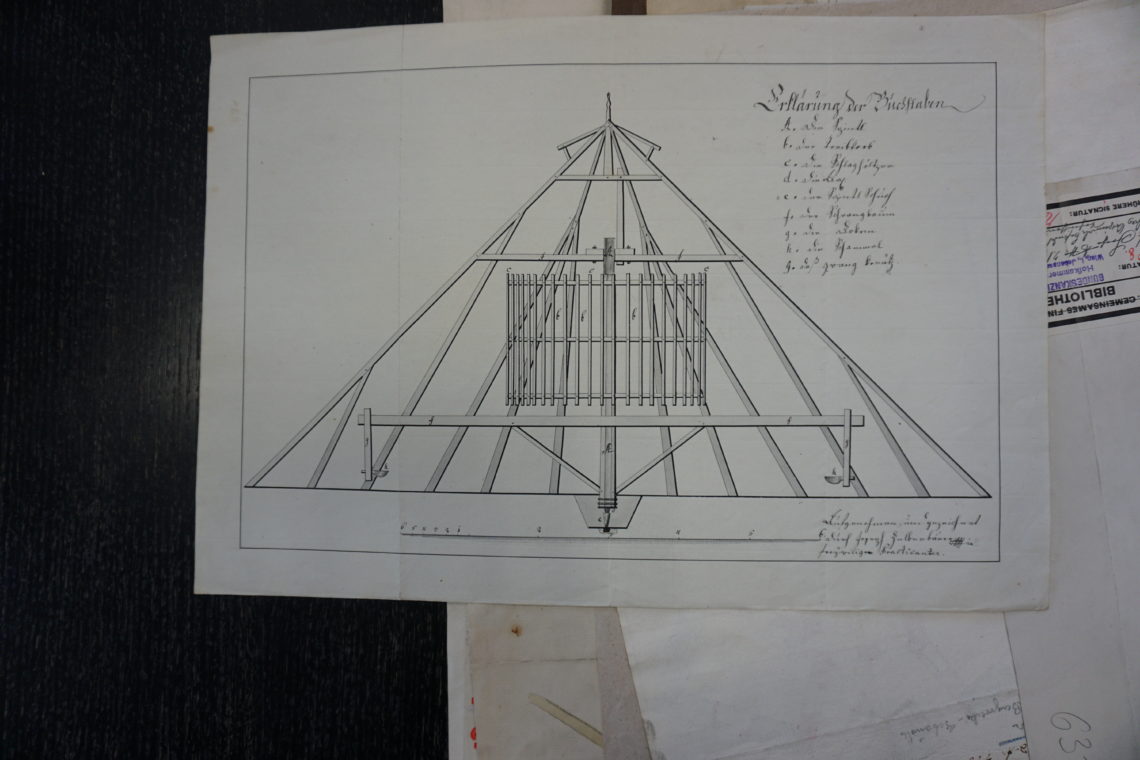
Early Engines in Europe – Slovakia
Steve Grudgings on a unique tour
From my interests in Early Engines I had long been aware that the first successful use of an atmospheric engine in Europe was somewhere in Hungary, in the 1720s, and that it was erected by Humphrey Potter. It had been covered in various papers by the Newcomen Society but that was about the extent of my knowledge. All this changed in late 2020 when David Perrett (of Newcomen Society and AIA fame) passed on a contact from a researcher in Germany. The researcher was involved in excavating the site of this engine.
I duly got in touch and was delighted to receive emails and images showing that excavations were underway of the foundations of what was thought to be Potter’s 1722 engine. Immediately after the pandemic lockdown ended in August 2021, my wife Diane, friend David Hardwick, and I arranged to fly out to visit these excavations.
The Engine Site
It is worth explaining that engine was erected in 1722 in the Hungarian part of the Hapsburg Austro-Hungarian Empire, at a town called Nova Bana, or Konigsberg in the extensively exploited central European gold field that is now in Slovakia.
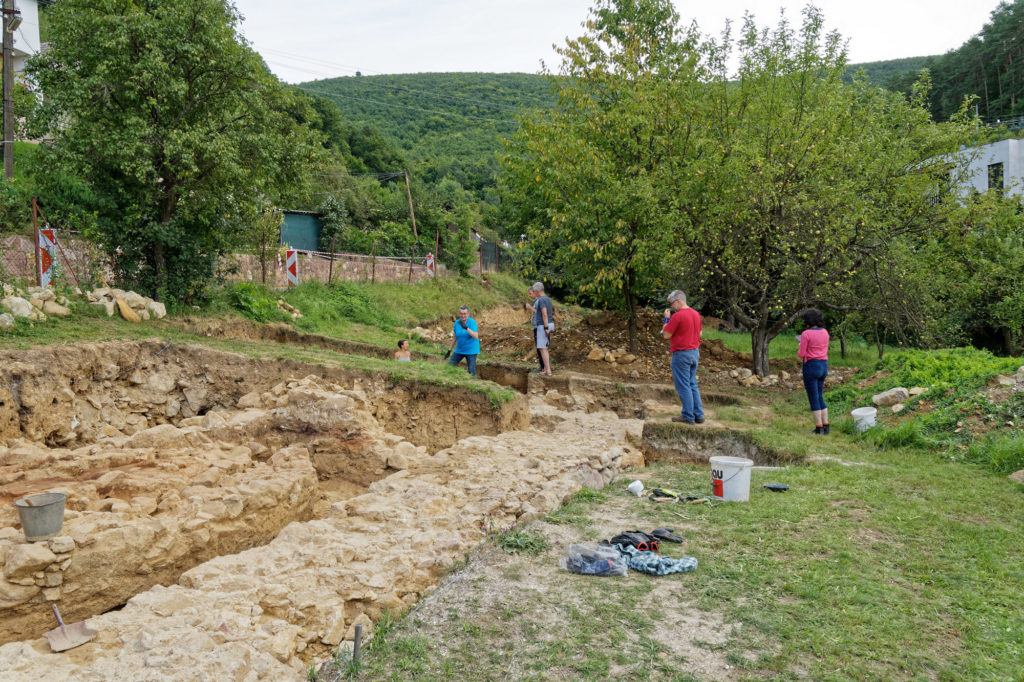
The history and background of the Isaac Potter, the man that erected the engine, is a whole saga in itself and will emerge over time I am sure. The individual making the contact was Dr Peter Konecny who turned out to be Head of the Slovakian Mining Archive based in nearby Banska Stiavnica. At the time of the initial contact he was still completing his PhD in Berlin.
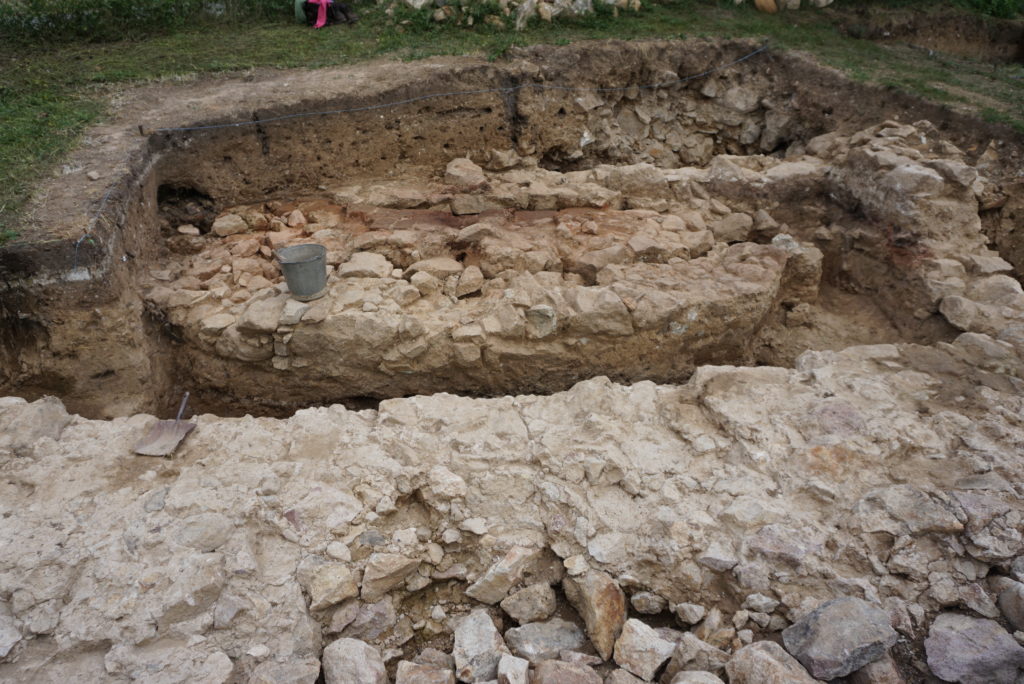
After collecting our hire car at Bratislava, we drove for a couple of hours through pleasant rolling countryside until we came to the hilly area around the engine site at Nova Bana where we met Peter and the local team.
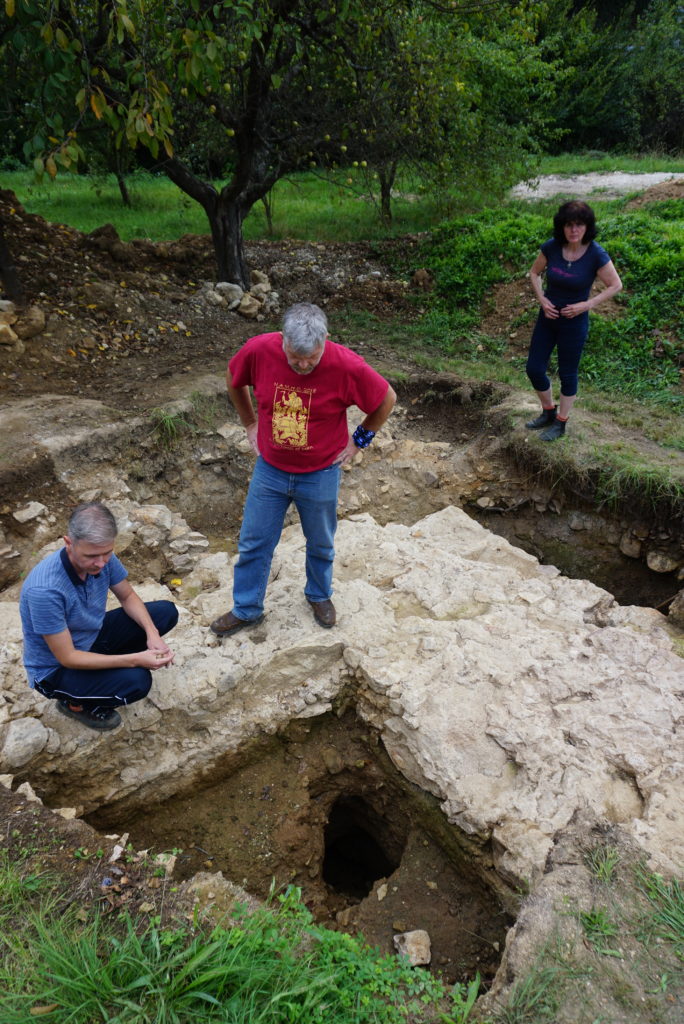
The site is under the archaeological oversight of Matej Styk and they were in their third season of excavations. We were welcomed by Peter and Matej and team stalwarts Andrea, Bruno and Stano, and made extremely welcome – with ample coffee and poppy seed cake.
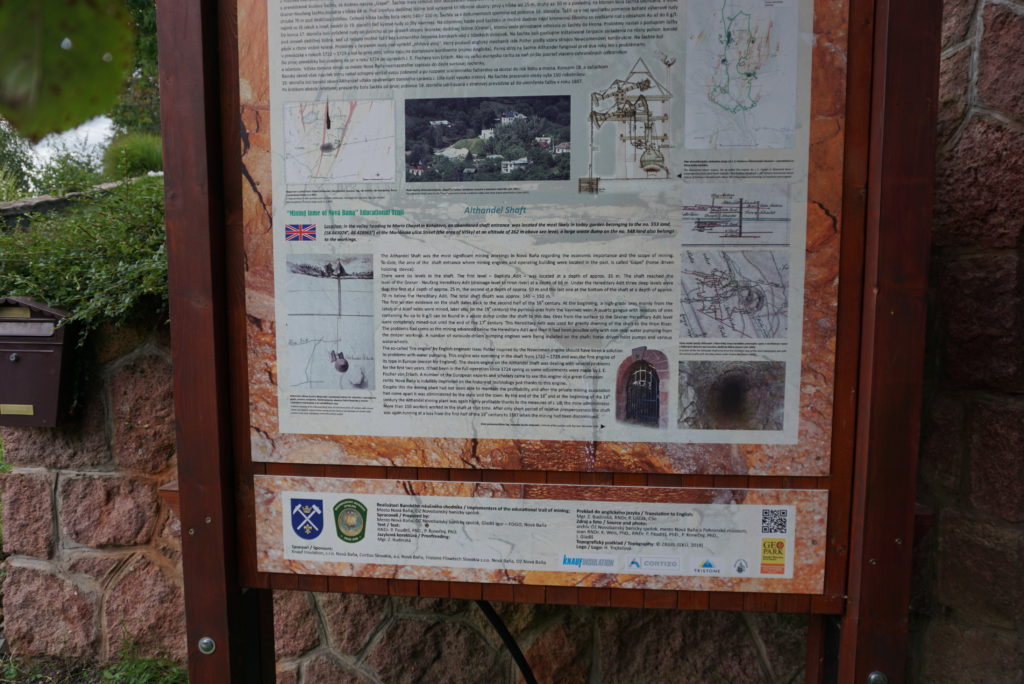
The excavations were very professionally conducted and made interesting and useful comparisons with our own South Gloucestershire Mines Research Group (SGMRG) excavations at the 1791 Serridge Engine site. We were particularly impressed by the attention and support given by the local community. We were also fascinated by the close proximity of a number of mining sites, including an old adit about 100 yards from the dig.
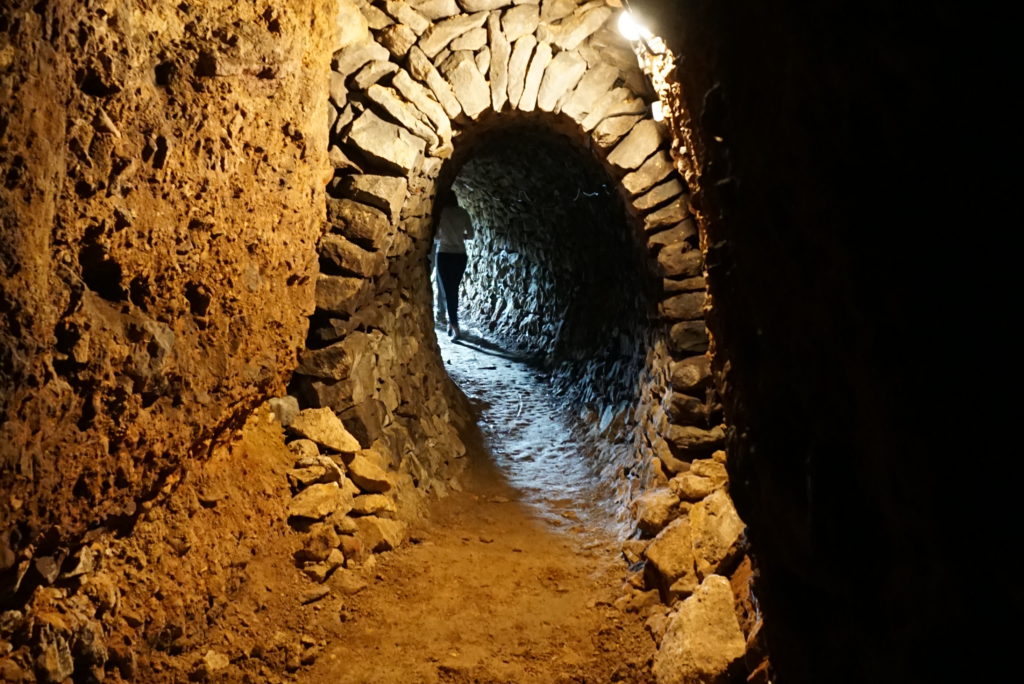
The Celebrations
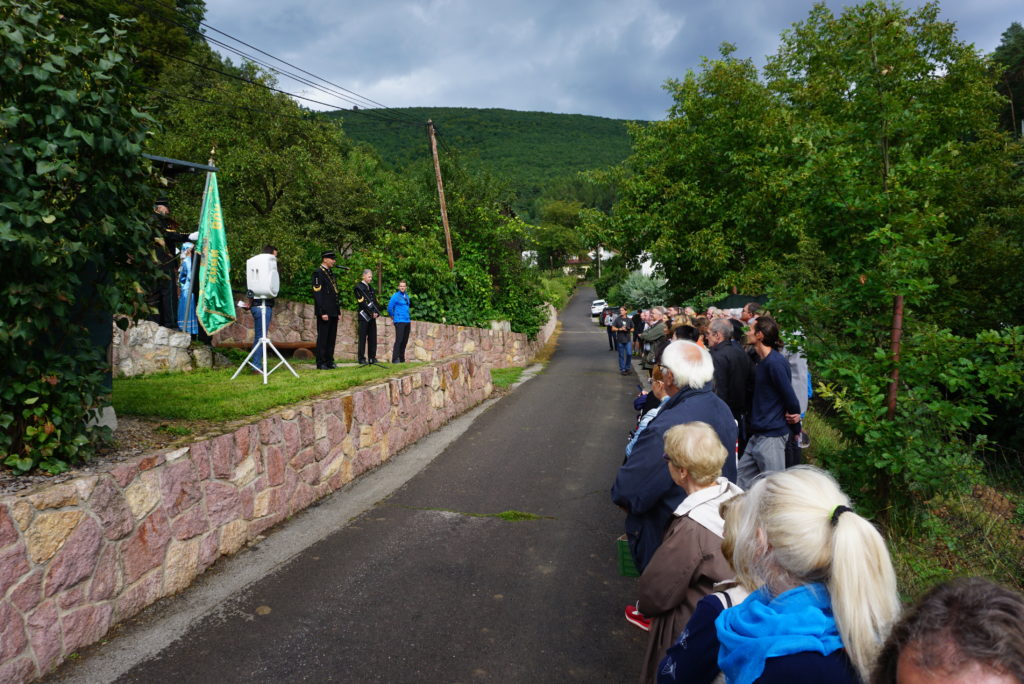
We had a most enjoyable few hours and were particularly pleased both to have access to such and old site but also to be able to make comparisons with our work at Serridge and our knowledge of other engine sites. Our visit coincided on the following day with the arrival of the Slovakian ambassadors of most western European countries – an indication of how much work the team had done to publicise the site nationally.
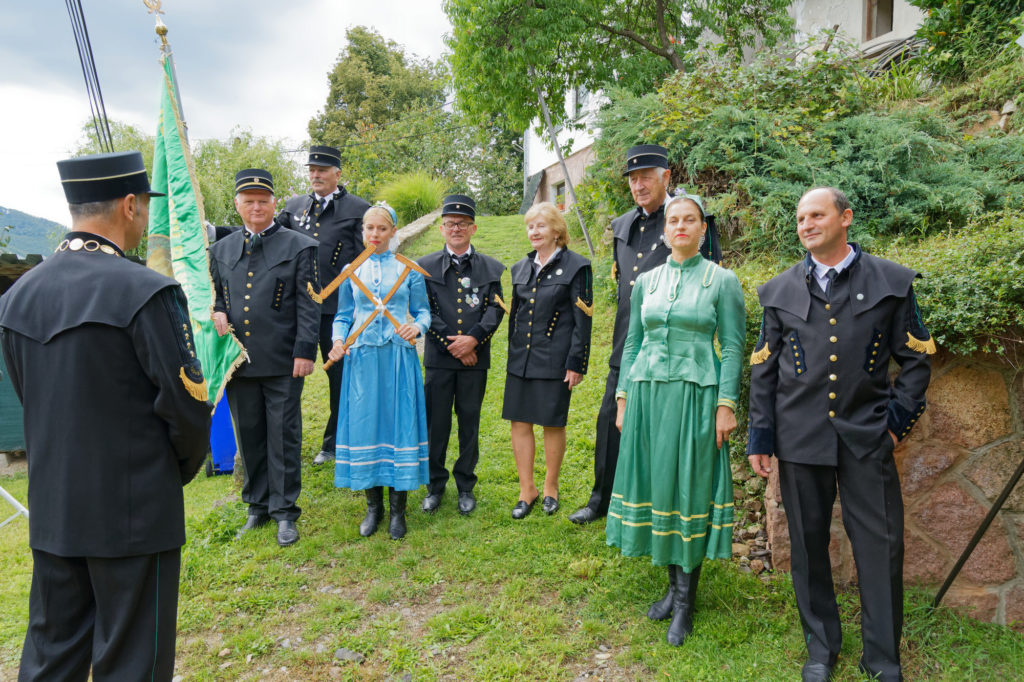
The number of large black limousines and their accompanying security men caused some heads to turn, and some complex traffic manoeuvres on the narrow mountain road leading to the site. Coffee, Cakes, canapes, wine, beer and the local brandy were served and presentations made by Peter and team who were kitted out in traditional 19th Century formal mining uniforms.
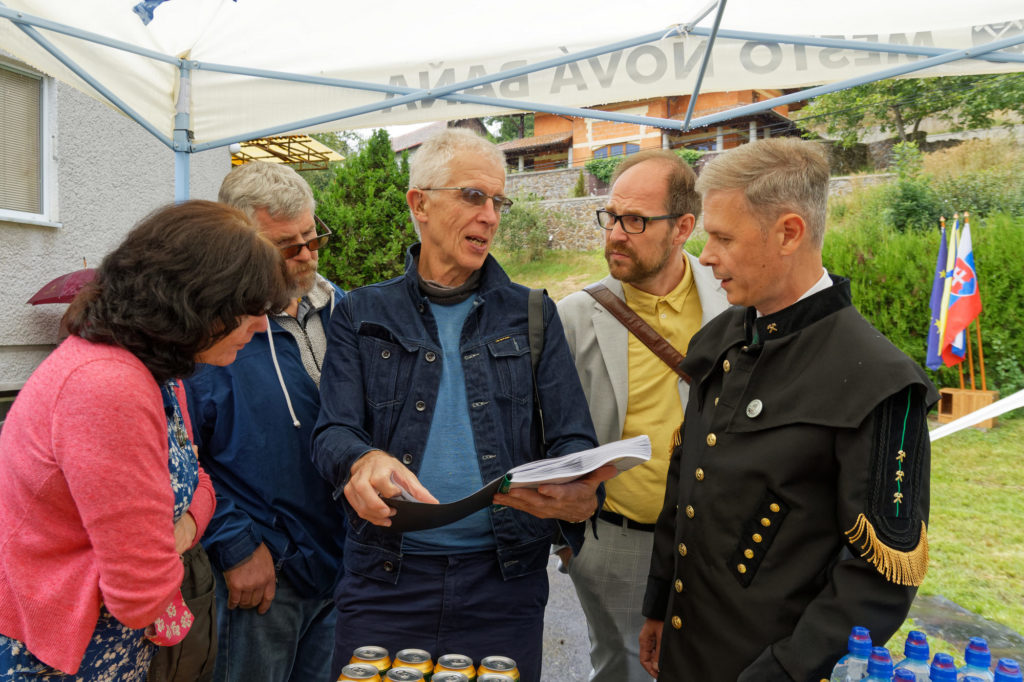
And then the heavens opened – fortunately only briefly.
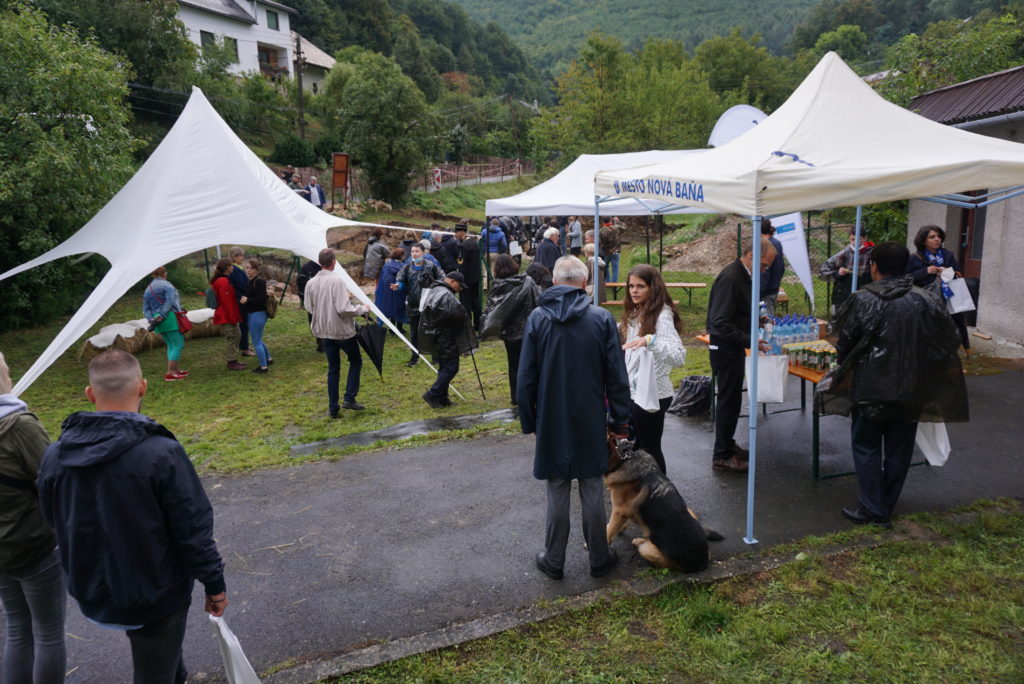
Afterwards the long file of ambassadors and us and the digging team were conducted on a delightful mountain walk to a viewing point some 100 metres higher. Unfortunately some of the group leaders took the wrong turning on the way back down which meant that the Ambassadors in their unsuitable clothing and footwear finished up scrambling over fallen trees and rocks on their way back to the final meal and reception But fortunately no diplomats were harmed in the process!
In the Archives
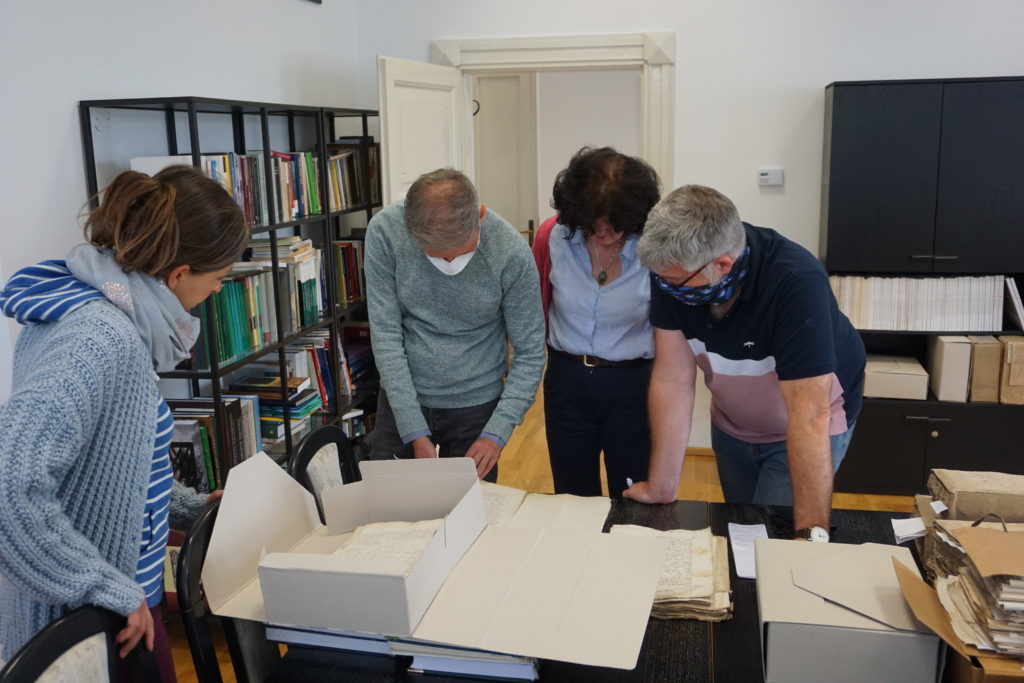
On our last day we were taken to the Mining Archives where Peter had kindly prepared a number of files of fascinating archival materials on the Nova Bana and other early local engines. The quality and extent of these was stunning and opened our eyes to the extent, scale and importance of metal mining in this part of Europe.
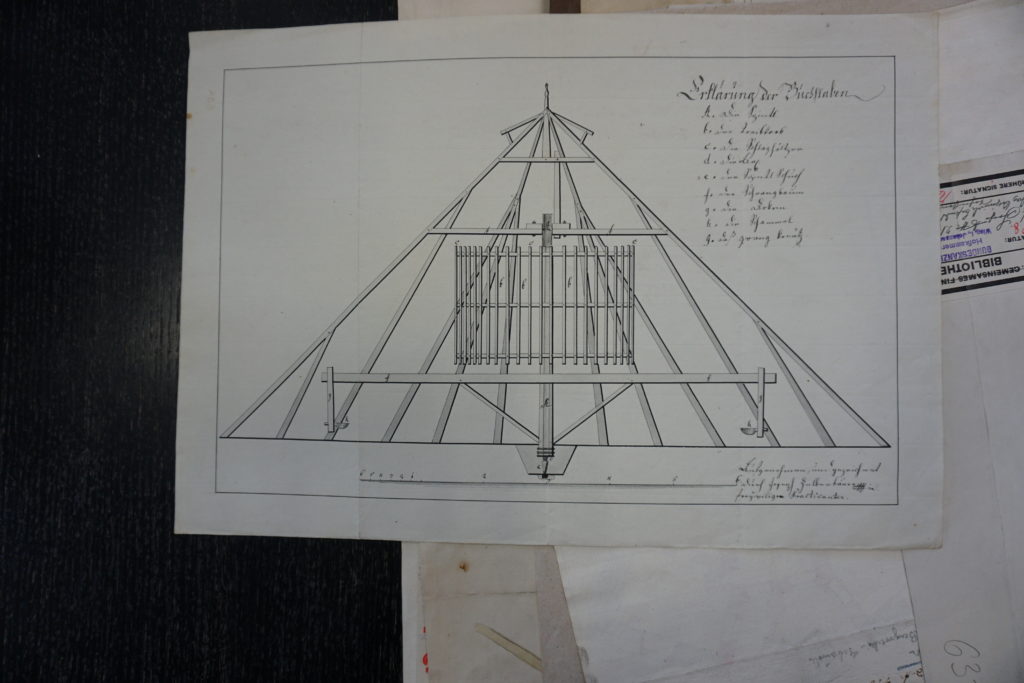
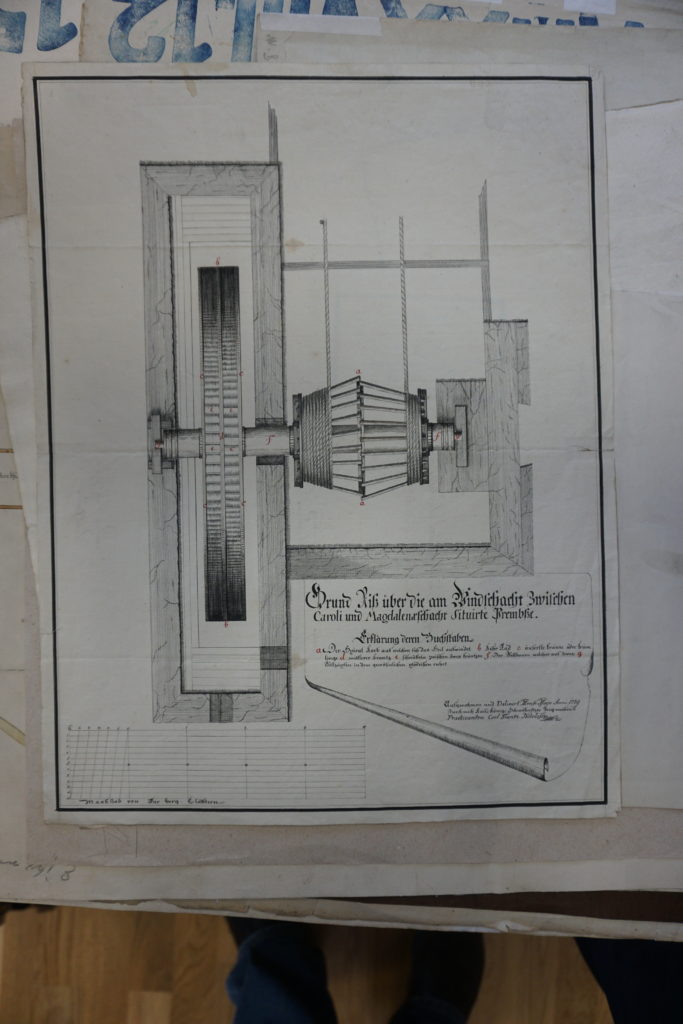
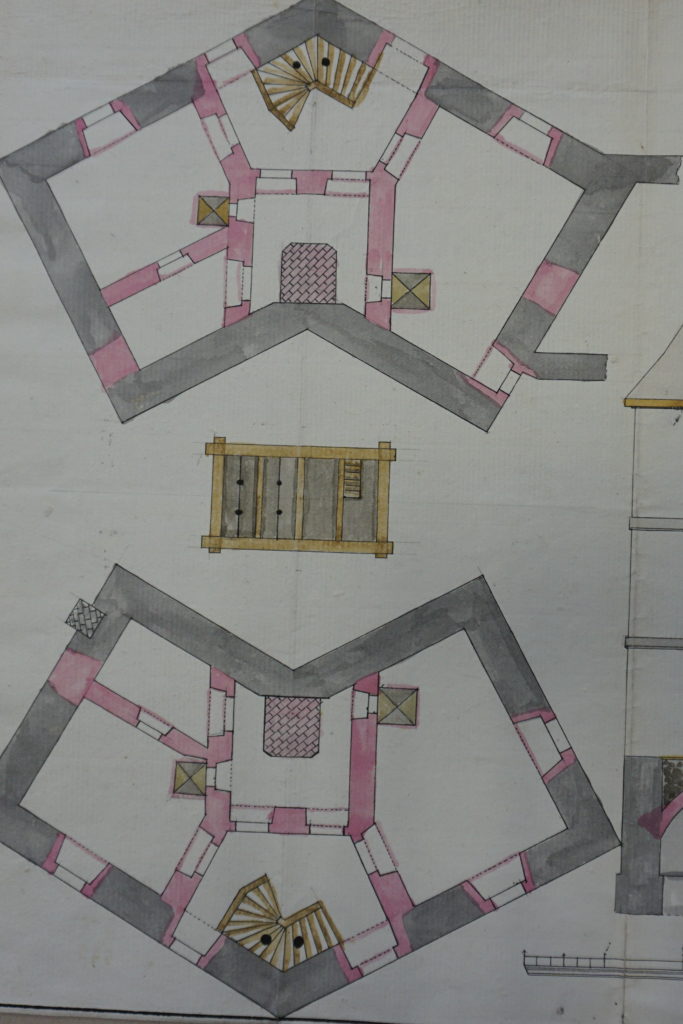
This was further emphasised when Peter took us on a car tour to look at local mining sites, these included a gigantic horse gin platform they had been excavating that needed 6 horses to work it – because the mine was so deep. I spotted a small assay cup (used to smelt samples of ore) in the ground and, with Peter’s permission, took it home as a souvenir.
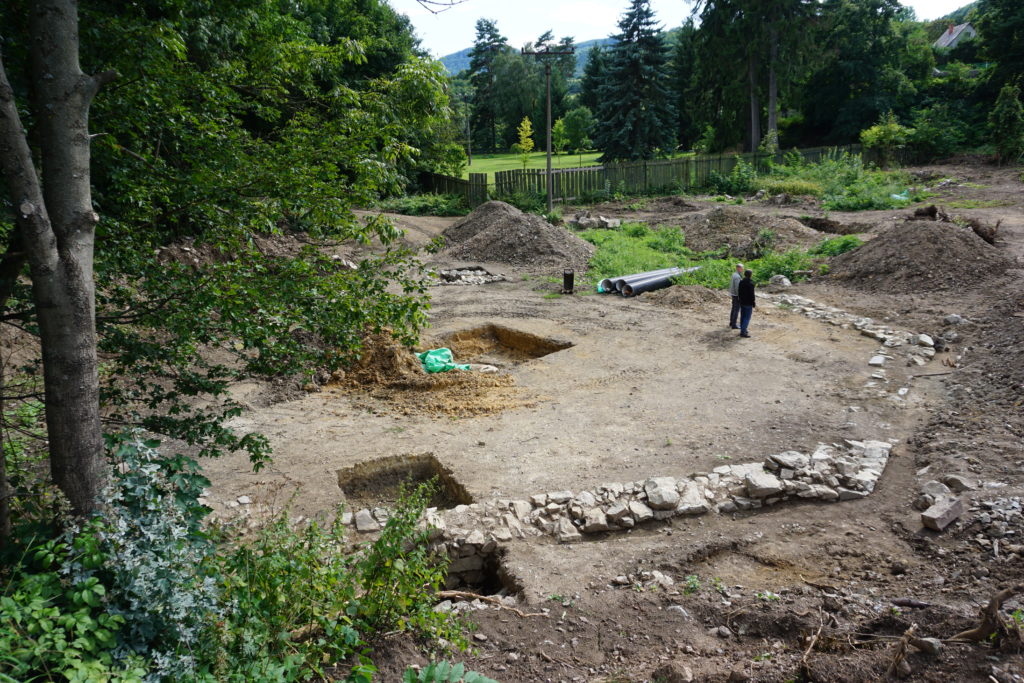
David had borrowed a state-of-the-art 3D mining laser surveying unit – about £25k’s worth of kit – which he used to measure the site too. Peter also took us to see the only remaining local Newcomen Engine House that had been converted into a dwelling, and we finished up with a very nice coffee and cream cakes overlooking one of the series of lakes used to supply water to the waterwheel-powered mining machinery.
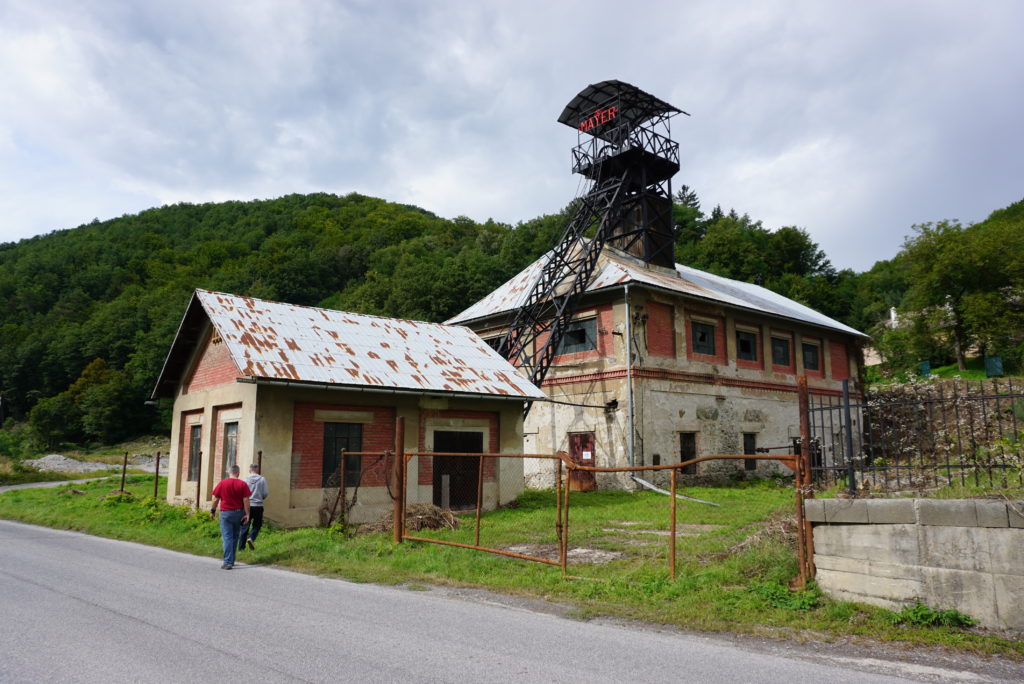
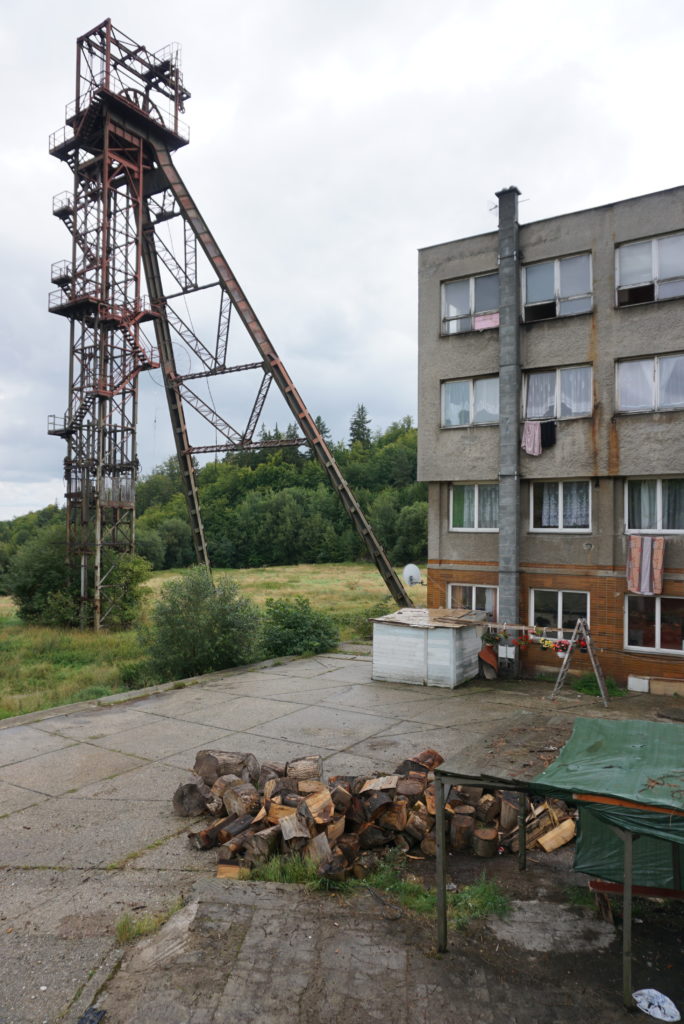
Return
Our journey home was tad fraught; we missed the flight because our Covid certificates were not valid and, after booking ourselves back into our hotel, found a vaccination center in Bratislava. Duly certificated, we took a 3-hour train ride to Poprad airport (there were only flights from Bratislava on alternate days). But the drama was not over: Steve foolishly chose to joke with the customs men at this small airport about the dangers of David’s borrowed laser level. Unfortunately Steve’s ironic sense of humour was perhaps wasted on them and they decided that David’s laser level should be impounded, although they were eventually persuaded to let it through!
All in all, a superb visit, and great introduction to this lovely friendly country!
Postscript
Peter, Andrea, Bruno and Stano all came to the UK to attend IEEC2 in October where Peter was giving a paper on the Nova Bana engine. They also wanted to sample the various UK engine sites and we tried to make them as welcome as they had made us. Peter told us they were planning their own conference on Early Engines in European Mining in October 2022 to celebrate the 300 anniversary of the Nova Bana Engine and this preamble is intended to set the scene for our attendance at this conference.


